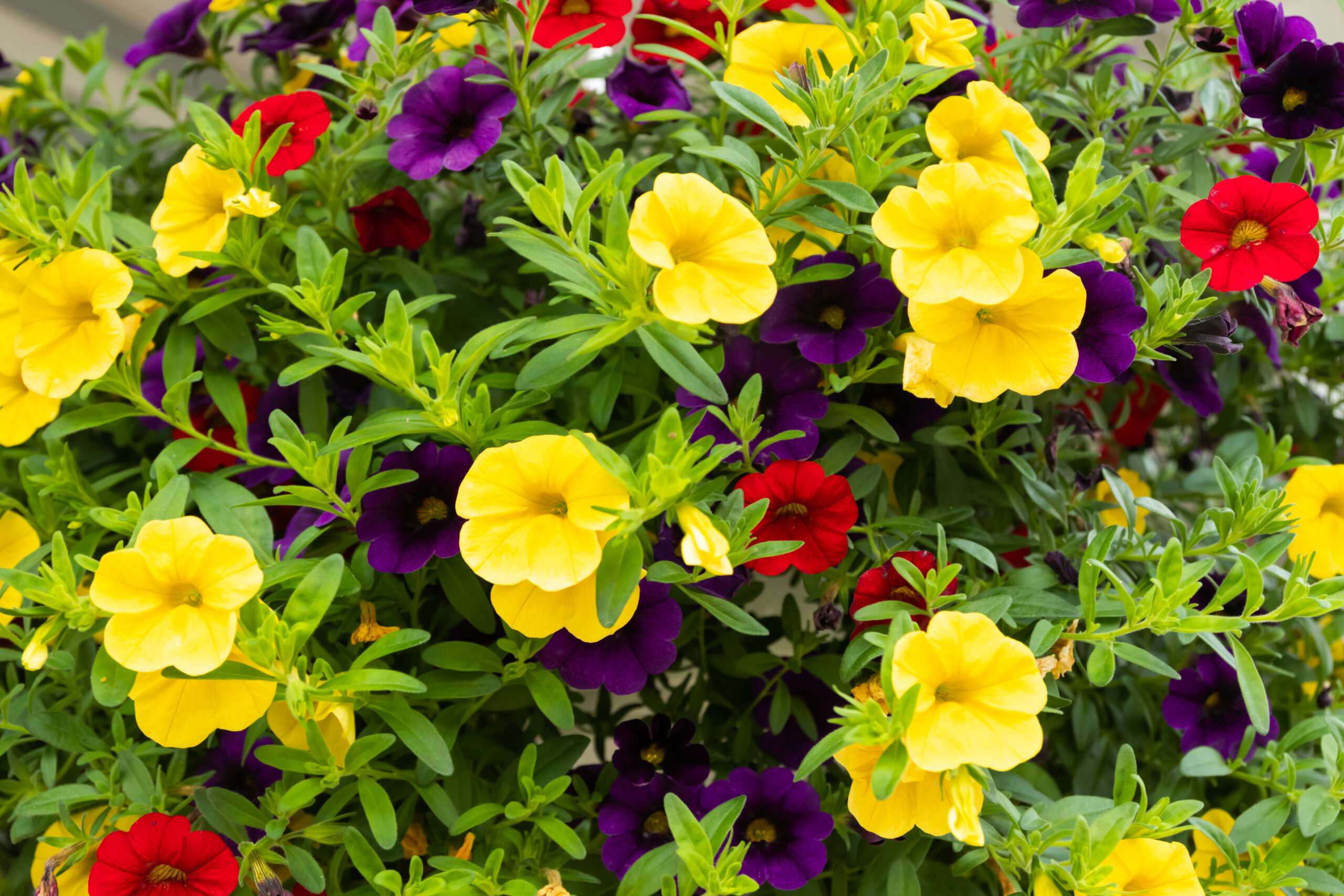Calibrachoa
There’s nothing quite like a hanging basket overflowing with Calibrachoa, commonly known as Million Bells. When these babies are in their full glory they are like a volcano spilling with color! Whether you love bright neon’s or prefer the soft subtlety of pastels there is a Calibrachoa for you!
If you’re unfamiliar with this little powerhouse let us fill you in. We guarantee you’ll get hooked!
Million Bells look like a small Petunia with their delicate, trumpet shaped flower but that’s where the similarities end. As we know Petunia’s can be a little too high maintenance for some of us. If you are not a diligent dead header your petunias can start looking sparse, and if you don’t pinch them back periodically they can get as spiny as a daddy long legger but, with their notorious sticky stems, that’s not a chore we tend to look forward to.
If this seems to describe you, then Million Bells are the ticket. No dead heading and nothing sticky here!
Are you a believer yet? If so, let’s talk about the care of Million Bells.
Originating from South America and Mexico, Million Bells need to have full sun to be happy and look their best. The only thing they detest is wind! The small flowers are attached to small stems which can be fragile so, try to locate them in an area where they won’t bang against anything if strong winds come through.
Consistent watering and fertilizing is the key to keeping Million Bells looking fabulous. Don’t forget that any plant growing in a container doesn’t have the benefit of natural moisture or nutrients in the ground. The supply of both is limited in a pot. As roots get larger and fill the soil space, its water and feeding needs will increase.
It’s a good idea to check your Million Bells at least once a day for water. If the pot is light or you see flowers starting to droop don’t wait…it needs a drink. Because it’s a full sun plant, there may be those days in the Tennessee heat where watering twice a day may need to happen. Million Bells will let you know very quickly when they need water, and they will give you two chances to bring them back to life before they give up and die on the third strike.
Because they are in constant flower production, they are what we call heavy feeders and should be fertilized once a week with a 20-20-20 fertilizer.
Pruning is as simple as trimming them back with scissors when they start to look thin at the bottom, and pinching back any thin growth on the top to encourage new branches.
As with any container plant, always monitor for pests. Aphids love Million Bells as much as we do. If you are seeing any yellowing or dropping leaves, Aphids, who tend to invade during the hottest and driest months, may be the reason. A weekly spray of insecticidal soap should eliminate them.
Million Bells…Beautiful color and easy care! The hard part is picking your favorite!
Now that you know all about them, stop into Willow Ridge Garden Center & Landscaping and pick up a few fabulous baskets for your front porch or patio. We guarantee they will be a show stopper!

